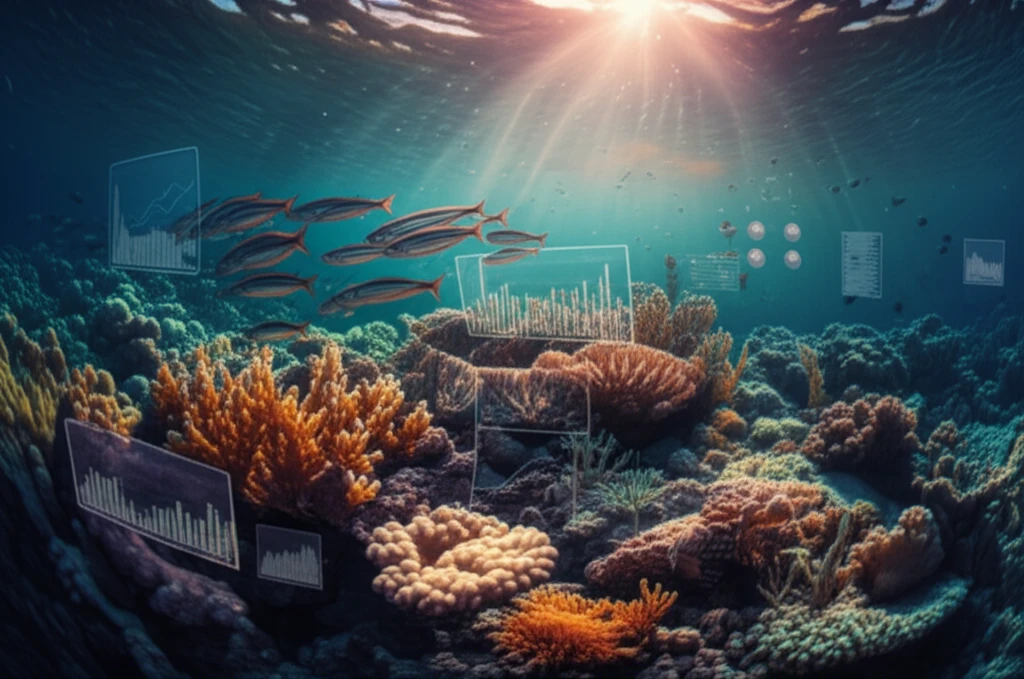
Unlocking the Secrets of Sardine Reproduction: Why Understanding Fish Sex Ratios Matters
"Dive into the fascinating world of Sardinella sindensis and discover how studying their reproductive biology can help protect our oceans and ensure sustainable fishing practices."
Commercial fishing in Pakistani coastal waters relies heavily on species like the Striped Piggy Grunt, Sardinella sindensis. Understanding the intricacies of their reproductive biology is paramount for maintaining healthy populations and supporting sustainable fishing practices. This article delves into a recent study examining the sex ratios and Gonadosomatic Index (GSI) of Sardinella sindensis along the Karachi coast in Pakistan, shedding light on critical aspects of their reproduction.
The Gonadosomatic Index (GSI) serves as a valuable tool, indicating the size of the gonads relative to the fish's overall size, and providing insights into gonadal development. Sex ratio studies, on the other hand, reveal the proportion of males to females within a population, highlighting potential dominance of either sex. Both contribute essential information for assessing reproductive potential and estimating stock sizes.
While some data exists on the reproductive biology of other fish species in the Indo-Pak and Arabian Gulf regions, research on Sardinella sindensis in the Karachi coast remains limited. This article explores the findings of a study aimed at investigating the gonadosomatic index and sex ratio of Sardinella sindensis, contributing to a deeper understanding of their reproductive habits and informing strategies for fisheries and aquaculture management.
Decoding Sardine Sex Ratios and GSI: What the Research Reveals

The study, conducted along the Karachi coast, examined a total of 419 Sardinella sindensis specimens collected over a period from January 2001 to April 2002. Researchers meticulously measured body length and weight, dissected the fish to determine sex, and calculated the Gonadosomatic Index (GSI).
- Balanced Sex Ratio: The overall sex ratio in Sardinella sindensis populations is relatively balanced, ensuring sufficient reproductive capacity.
- Peak Spawning Season: June to August appears to be the peak spawning season for both male and female sardines along the Karachi coast.
- Size Matters: The highest GSI values were found in specific size groups, indicating that reproductive maturity is linked to size.
Protecting Sardinella sindensis: The Future of Sustainable Fisheries
Understanding the reproductive biology of Sardinella sindensis is essential for effective fisheries management and conservation. By studying the sex ratios and Gonadosomatic Index (GSI), scientists can gain valuable insights into spawning seasons, reproductive maturity, and overall population health. This knowledge can be used to develop sustainable fishing practices that minimize the impact on sardine populations and ensure their long-term survival.
The findings of this study highlight the importance of protecting Sardinella sindensis during their peak spawning season (June to August). Implementing fishing restrictions or establishing marine protected areas during this period can help ensure that sardines have the opportunity to reproduce and replenish their populations. Additionally, targeting larger, more mature fish can help maintain the genetic diversity and reproductive potential of the species.
By incorporating scientific knowledge into fisheries management strategies, we can promote sustainable fishing practices that benefit both the environment and the economy. Further research into the reproductive biology of Sardinella sindensis is needed to refine our understanding of their life cycle and inform adaptive management approaches. With continued efforts, we can ensure the long-term health and abundance of sardine populations along the Karachi coast and beyond.
